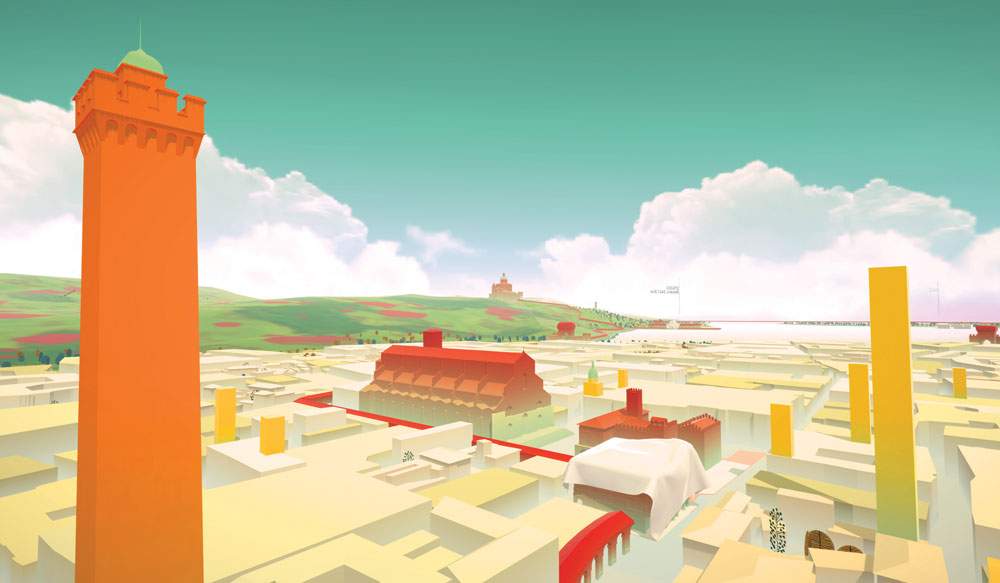What does Bologna look like and what will it be like? A virtual reality app arrives at Palazzo Pepoli to find out
What does the city of Bologna look like and what will it look like? The new hall of Palazzo Pepoli, home of the Museum of the History of Bologna, is hosting the virtual reality application The Forgotten Future, conceived by Fabio Roversi Monaco and Marco Roccetti, full professor of Computer Science at Alma Mater Studiorum, and designed by Loop and WhatWeare. Using visors, museum users will have access to a “flight” within a stylized environment completely reconstructed in 3D: a poetic Bologna, reflecting on itself and the way in which over time it has imagined and realized its own future.
The Realized Future, the first itinerary, which will be joined by another during 2020, with likely further developments, shows three significant projects carried out in Bologna in recent decades, starting with the postwar reconstruction of the city: from Kenzo Tange ’s Towers of the Fiera District to the Manifattura delle Arti, the headquarters of the Cineteca, the MAMbo - Museum of Modern Art of Bologna, the Cassero, and ending with the Pilastro district, the first major social housing project in the suburbs following the great population growth of the 1950s and 1960s.
“The future is the child of decisions and choices made in the past. This project shows that the role of a Museum is not only to collect in static form evidence of the past, but also to bear witness to a movement, whose shock wave continues to act in the present and the future, revealing the will, directions and ambitions of an entire community, its way of representing itself over time, more or less consistently. The selection we are proposing is obviously limited and arbitrary: other projects could have been chosen, but these seemed to us the most suitable to understand the relationship between past, present and future and the way the city has tried to imagine and prepare for its future. This is why I searched for a long time for an object that recounts a really important moment in the city’s development, which I am now happy to host at the Museum of the History of Bologna,” said Roversi Monaco.
On the second floor of the museum is Bologna 1984: the large original model of the fairgrounds by Kenzo Tange, one of the most important protagonists of 20th century architecture. The “Tange Plan” envisioned a modern expansion while respecting a still medieval layout, placing Bologna among the most innovative urban planning experiences internationally. The architect created three models: two were a reproduction of Bologna’s historic center, the third was Bologna 1984.
The Fiera District would be the only part of Tange’s plan actually built: the complex is characterized by tall towers, arranged around a main square, at the center of which stands Isamu Noguchi’s monumental sculpture.
 |
| What does Bologna look like and what will it be like? A virtual reality app arrives at Palazzo Pepoli to find out |
Warning: the translation into English of the original Italian article was created using automatic tools. We undertake to review all articles, but we do not guarantee the total absence of inaccuracies in the translation due to the program. You can find the original by clicking on the ITA button. If you find any mistake,please contact us.





























